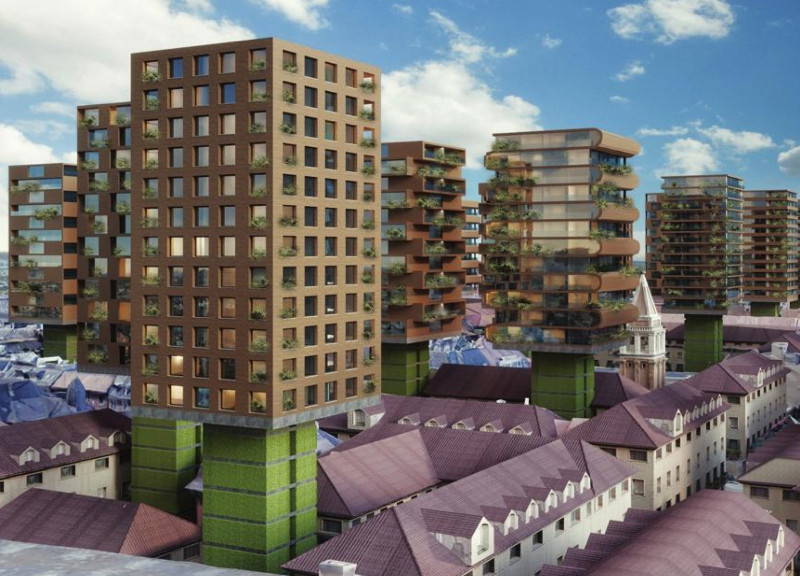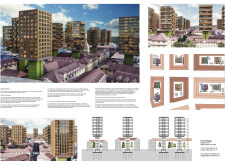5 key facts about this project
## Project Overview
Located in an unspecified urban center rich in history, the design incorporates residential towers that rise above existing structures, merging contemporary architectural aims with a commitment to historical preservation. The primary intent is to effectively address housing shortages while integrating into the established urban framework, thereby enhancing community engagement.
## Spatial Strategy
The design introduces vertical living spaces, with residential towers reaching approximately 25 meters in height. These structures are strategically layered to optimize the use of limited horizontal space, simultaneously creating a distinctive skyline that honors local heritage. The arrangement is enhanced by a second-level platform that facilitates communal areas above ground, fostering connectivity through vertical links.
### User-Centric Design
Key features include a focus on public transportation accessibility and walkable pathways, ensuring the design complements the movement patterns of the urban populace. The residential units are configured using modular architecture, accommodating diverse living situations while promoting a sense of community. This approach enriches the urban experience by balancing private living with communal interactions.
## Materiality and Sustainability
The material palette blends traditional and contemporary elements, featuring timber for warmth and sustainability, concrete for durability, and glass to maximize natural light. This selection is guided by a commitment to aesthetic appeal and environmental responsibility. Innovative green façades, including vertical gardens and communal terraces, contribute to urban biodiversity and enhance residents' well-being by integrating natural elements into the living environment.
### Ecological Measures
The design incorporates advanced water management systems to effectively address urban runoff, integrating sustainable practices into daily life. These features not only promote ecological resilience but also aim to mitigate the urban heat island effect, thereby contributing positively to the environmental quality of the area.



















































